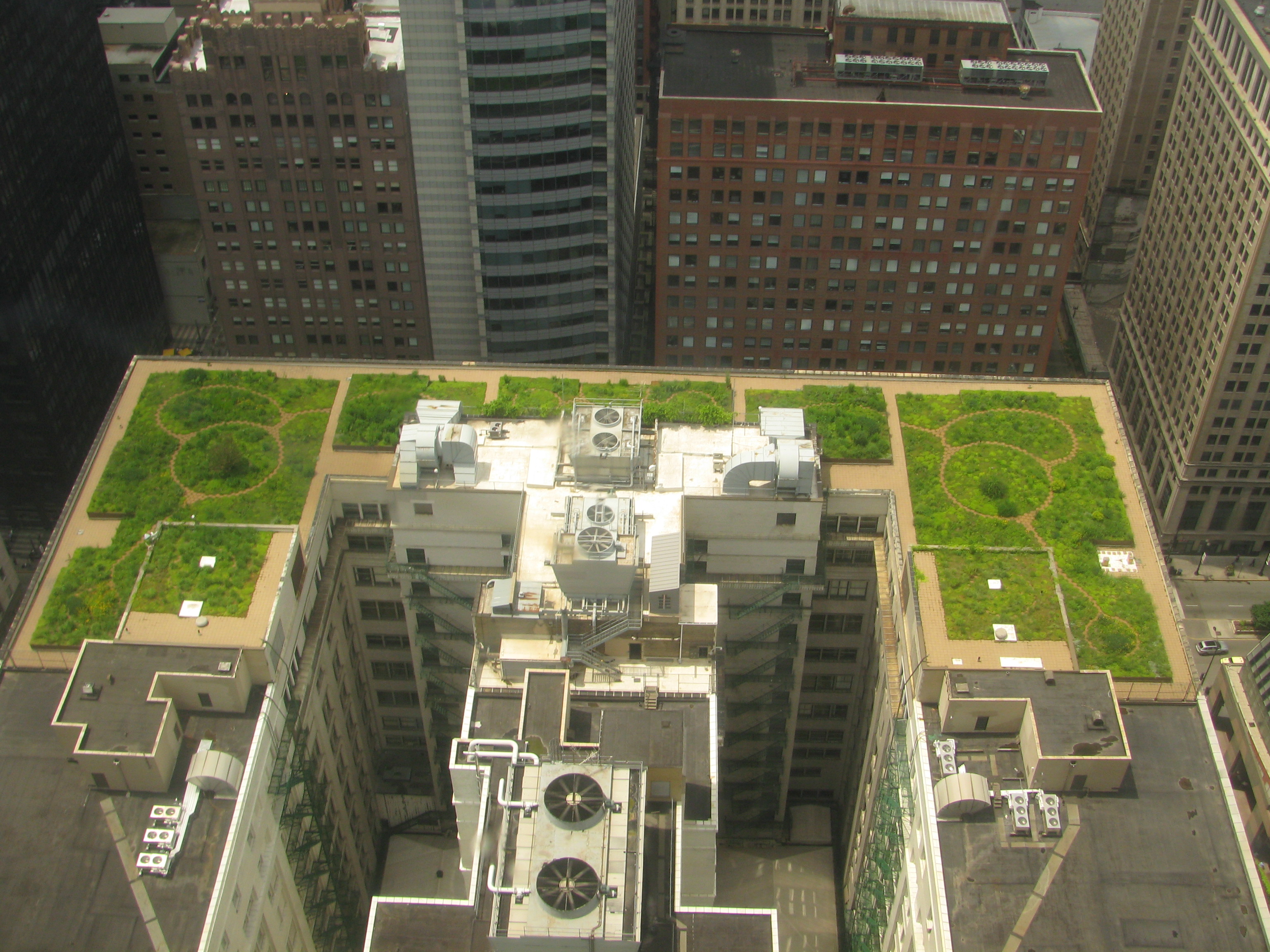
In Chicago, Rooftop Farming Is Getting off the Ground
For more than a decade, Chicago has been at the forefront of the green-roof movement. Now the city is poised to take an active role in the next environmental push — using roofs to grow food.
Rooftop farms are popping up around the city: on a convention center that has grown tens of thousands of pounds of produce since 2013, at a factory expected to have the world's largest such operation when it's completed this summer in the Pullman neighborhood, and at various sites run by small businesses and educational programs.
July 5, 2015 | Source: Los Angeles Times | by Paulina Firozi
For more than a decade, Chicago has been at the forefront of the green-roof movement. Now the city is poised to take an active role in the next environmental push — using roofs to grow food.
Rooftop farms are popping up around the city: on a convention center that has grown tens of thousands of pounds of produce since 2013, at a factory expected to have the world’s largest such operation when it’s completed this summer in the Pullman neighborhood, and at various sites run by small businesses and educational programs.
Across the country, there has been a call for new food-producing spaces, said Steven Peck, founder and president of Green Roofs for Healthy Cities, a Toronto-based industry association that promotes green roofs.
“There’s a demand for high-quality food in our cities — a consumer demand for it, a social need for it,” he said. “There’s a longing for people living in densely developed cities to reconnect to farming and to nature, to rooftop agriculture.”
It’s too early to tell what kind of impact rooftop farming, now in its infancy, could have on food production.
There are at least 13 rooftop farms in Chicago, although there could be more, said Peter Strazzabosco, deputy commissioner of the city’s Department of Planning and Development.
Michael Bryson, a professor of humanities and director of sustainability studies at Roosevelt University in Chicago, says the discussion of sustainability is crucial and urban agriculture can contribute to the evolution of how food is grown and distributed.
“It’s super-important, recognizing that something as basic as where and how we grow our food has reverberations in other systems: in transportation, in energy, in waste management, in mitigating pollution from the trains and trucks that transport our food,” he said.
And rooftop farms make sense in Chicago, a city known for green development, Bryson said.
After a trip to Germany, former Democratic Mayor Richard M. Daley returned with a mission to turn Chicago into a green-movement leader and installed the city’s first green roof atop City Hall in 2000.
In the years since, green roofs — roofs that have a layer of vegetation growing over them — have gotten a lot of attention, and Chicago has been recognized as one of the leaders in North America. The city has more than 5.5 million square feet on more than 500 rooftops, Strazzabosco said.
But even that is still a small number. Those 500 green roofs represent a little less than one-tenth of 1% of Chicago’s more than half a million buildings. In Germany, experts said in 2010 that 15% to 20% of the flat roofs in the country were green.
In 2011 in Chicago, in an effort to promote urban farming, the city passed a zoning ordinance specifically allowing rooftop farms to be built in the city.
Now Gotham Greens, a New York company, is set to open what it says will be the world’s largest rooftop farm in August in the Pullman neighborhood.
